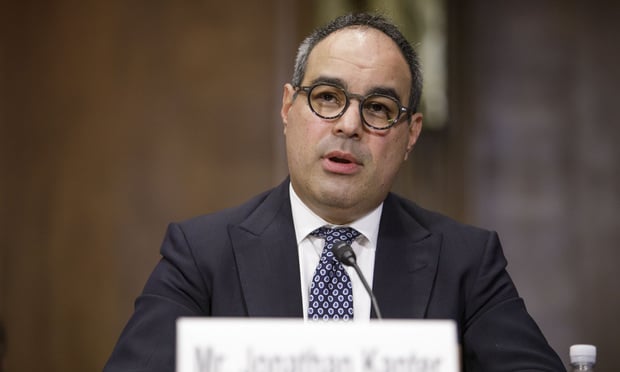 State-based marketplaces, which cover about 11 million peoplenationally, are becoming more robust and less risky for insurers —despite ongoing political and legal battles over the ACA.
State-based marketplaces, which cover about 11 million peoplenationally, are becoming more robust and less risky for insurers —despite ongoing political and legal battles over the ACA.
Felicia Morrison is eager to find a health plan for next yearthat costs less than the one she has and covers more of the medicalservices she needs for her chronic autoimmune disease.
|Morrison, a solo lawyer in Stockton, Calif., buys coverage forherself and her twin sons through Covered California, the state’sAffordable Care Act insurance marketplace. Morrison, 57, gets afederal subsidy to help pay for her coverage and she said that hermonthly premium of $167 is manageable. But she spends thousands ofdollars a year on deductibles, copayments and care not covered byher plan.
|“I would just like to have health insurance for a change thatfeels like it’s worth it and covers your costs,” she said.
|Related: Problem of underinsured Americans isincreasing
|Her chances are looking up after lawmakers in Sacramento actedto enhance Covered California for 2020: They added state-funded taxcredits to the federal ones that help people pay for coverage. Andthey reinstated a requirement for residents to have coverage or paya penalty — an effort to ensure that enough healthy people stay inthe insurance pools to offset the financial burden of customerswith expensive medical problems.
|An added benefit of these new policies: They appeal to insurers,which are expanding operations in the state, enhancing competitionand offering consumers more choices.
|California’s ACA exchange is not the only one benefiting fromthe renewed interest of insurance companies. Other states areexpected to see more insurers enter or re-enter their marketplacesnext year. That’s a critical signal, experts said, that thestate-based marketplaces, which cover about 11 million peoplenationally, are becoming more robust and less risky for insurers —despite ongoing political and legal battles over the ACA.
|“It’s taken longer than expected, due in part to the politicalrancor, but things seem poised to go well for next year,” saidKatherine Hempstead, a senior policy adviser at the Robert WoodJohnson Foundation. “The ACA market is becoming a better place forinsurers and consumers.”
|Hempstead said 2020 would likely be the second year in a rowwith a net increase in the number of insurers participating andrelatively modest premium increases nationwide.
|Covered California said last month it expected an average premium increase of just 0.8 percent in 2020,far below this year’s hike of nearly 9% and the lowest since theagency began enrolling people in October 2013.
|Peter Lee, Covered California’s executive director, attributednext year’s slender rate increase to the new state-funded premiumsubsidies and the requirement that people be insured.
|California is one of a handful of states offering its ownsubsidies to residents — and the first to provide them to peoplemaking more than the federal income threshold of400 percent of the federal poverty level. The subsidiesare available to people earning up to 600 percent of thepoverty level, which are individuals making up to about $75,000 ayear and families of four with an annual income up to $154,500. Theextra aid is expected to help 235,000 families who didn’tpreviously qualify for federal help.
|California insurers have responded enthusiastically.
|Anthem Blue Cross, which withdrew from most of the state’sindividual market in 2018, is jumping back in. It will expandofferings in the Central Valley and return to the Central Coast,Los Angeles County and the Inland Empire. Anthem health plans willbe available to nearly 60% of Californians next year, according toCovered California.
|Blue Shield of California will also expand its HMO plan intoparts of Tulare and Riverside counties and add coverage in Kingsand Fresno counties. And the Chinese Community Health Plan willexpand to cover all of San Mateo County next year.
|“Nearly every Californian will be able to choose from twocarriers, and 87% will have three or more choices in 2020,” saidLee. He urged people to shop among plans, including the new ones,to try and lower their premiums.
|“I definitely plan to look carefully at all new options,”Morrison said.
|Felicia Morrison, pictured with her husband, Bryant, and sons,Neil and Nathan, buys coverage for herself and her sons throughCovered California. (Courtesy of Felicia Morrison)
|Anthem, the nation’s second-largest health insurer with 40million enrollees in 10 states, also plans to expand its ACAcoverage in Virginia next year.
|Centene, which has 12 million enrollees nationwide, plans toexpand into new ACA markets next year as well, a companyspokesperson said. It operates in 20 states, three of which itentered for the first time this year.
|Two startup insurers, launched in recent years in part to servethe ACA marketplaces, also plan expansions in 2020. Bright Health,based in Minneapolis, announced in late July that it will offer ACAplans in six more states, on top of the four it now serves.
|And New York-based insurer Oscar, which this year offered ACAplans in nine states, including California, plans to enterColorado, Pennsylvania and Virginia, as well as new areas of NewYork and Texas.
|Participation rates matter. A 2017 study by researchers at the Urban Institute found that themedian monthly ACA premium that year was $451 in areas with oneinsurer compared with just over $300 in markets with three to fiveinsurers and $270 in those with six or more insurers.
|The number of insurance companies offering plans in ACAmarketplaces has fluctuated. From 2014 to 2016, the average numberwas between five and six, according to the Kaiser Family Foundation. That number declined to 3.5 lastyear, following Republican threats to gut or replace the ACA andTrump administration changes to the marketplaces. (Kaiser HealthNews is an independent program of the foundation.)
|Premiums in some areas rose 20% to 30%.
|This year, the average number of plans ticked up to four.
|But variability among states is still substantial. Four states —Alaska, Delaware, Mississippi and Wyoming — have just one ACAinsurer this year. In contrast, seven states — California,Massachusetts, Michigan, New York, Ohio, Texas and Wisconsin – haveeight insurers or more.
|“Anything less than three is not a good situation,” said SabrinaCorlette, a research professor at the Center on Health InsuranceReforms at Georgetown University in Washington. “It looks like themarketplaces are stabilizing, though, and importantly the insurersare now making more money in this market.”
|Kelley Turek, the director of commercial insurance at America’sHealth Insurance Plans, the main trade group for health insurancecompanies, agreed. “The churn is finally slowing down,” Turek said.“Companies are staying and expanding into new geographical areas.We strongly agree the market works best when consumers have morechoice.”
|The ACA marketplaces still need more regulatory predictability,however, and political divisiveness over the ACA continues toundermine that, Turek said.
|Kaiser Health News isa nonprofit news service covering health issues. It is aneditorially independent program of the Kaiser Family Foundation,which is not affiliated with Kaiser Permanente.
|Read more:
Complete your profile to continue reading and get FREE access to BenefitsPRO, part of your ALM digital membership.
Your access to unlimited BenefitsPRO content isn’t changing.
Once you are an ALM digital member, you’ll receive:
- Critical BenefitsPRO information including cutting edge post-reform success strategies, access to educational webcasts and videos, resources from industry leaders, and informative Newsletters.
- Exclusive discounts on ALM, BenefitsPRO magazine and BenefitsPRO.com events
- Access to other award-winning ALM websites including ThinkAdvisor.com and Law.com
Already have an account? Sign In
© 2024 ALM Global, LLC, All Rights Reserved. Request academic re-use from www.copyright.com. All other uses, submit a request to [email protected]. For more information visit Asset & Logo Licensing.








